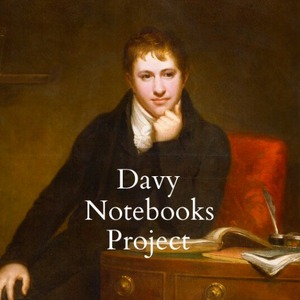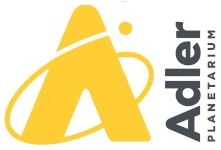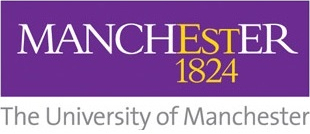Davy Notebooks Project
Oh, most magnificent and noble Nature!
Have I not worshipped thee with such a love
As never mortal man before displayed?
Adored thee in thy majesty of visible creation,
And searched into thy hidden and mysterious ways
As Poet, as Philosopher, as Sage? "
Humphry Davy, quoted from John Davy's "Fragmentary Remains" (p. 14); see also RI MS HD/13/I (p. 160)

The Davy Notebooks Project (2019-24), with the help of over 3,800 volunteer transcribers, transcribed Sir Humphry Davy's (1778-1829) entire notebook collection on Zooniverse, the world's largest and most popular platform for people-powered research, between 2019 and 2024. This work forms the basis of the crowdsourced transcriptions presented in this digital edition, alongside images of the notebook pages. A full list of our volunteer transcribers, to whom the project team is deeply grateful, is available to view here. The majority of the accompanying notes to the edition are based on original research carried out by our volunteer community, and posted on the Davy Notebooks Project Talk forum.
Sir Humphry Davy was perhaps the most famous chemist of the early nineteenth century. Born in Penzance, Cornwall, on 17 December 1778, Davy was released from an apprenticeship as an apothecary-surgeon and became Superintendent of Thomas Beddoes's (1760-1808) Medical Pneumatic Institution (MPI) in Bristol (1798-1801). At the MPI, Davy conducted experiments on the physical properties of nitrous oxide and the physiological effects of the inhalation of nitrous oxide and other gases. He moved to the recently-founded Royal Institution of Great Britain (RI) in London to take up a lectureship in 1801, where, over the next decades, he held several positions: Director of the Laboratory (1801-25), Professor of Chemistry (1802-12), and Honorary Professor (1813-23). At the RI, Davy conducted his most important chemical work: he isolated the elements potassium, sodium (both 1807), magnesium, calcium, strontium, and barium (all 1808) using electrochemical methods, and demonstrated the elemental nature of chlorine (1810); later, he showed iodine to be an element (1813).
Knighted by the Prince Regent in 1812, Davy married a wealthy widow, Jane Apreece, née Kerr (1780-1855), and stepped down from his paid positions at the RI. In 1815-17, Davy invented a miners' safety lamp which bears his name, and engaged in a bitter controversy with figures including George Stephenson (1781-1848) and William Reid Clanny (1776-1850) over priority for the invention. Having attempted to unroll the carbonised Herculaneum papyri using chemical methods, with mixed results (1818-20), Davy was elected President of the Royal Society (PRS) in November 1820, succeeding the long-standing previous incumbent Sir Joseph Banks (1748-1820). As PRS, Davy, enlisted by the Navy Board, unsuccessfully trialled electrochemical methods to protect the copper bottoms of ships' hulls from chemical erosion. After suffering a series of strokes in 1826-29, Davy died in Geneva on 29 May 1829, aged fifty. For a full chronology of Davy's life, and a list of Davy resources, please click here.
The RI holds 129 largely unpublished notebooks and collections of lecture notes written by Davy. Additionally, five of Davy's notebooks, containing geological notes, are held at Kresen Kernow, Cornwall. Davy's notebooks are generically mixed, containing details of his scientific experiments, poetry, geological observations, travel accounts, personal philosophy, and more.
The notebooks are grouped into four sections, within each of which they are listed chronologically. The first section contains the Royal Institution's laboratory notebooks, from 1805 until 1829. As well as entries in Davy's hand, they also contain records of experiments written by Michael Faraday, William Thomas Brande and unidentified. The second section contains notes of Davy's lectures that he delivered at the Royal Institution, the Board of Agriculture and the Dublin Society. Davy frequently reused notes for both courses and individual lectures between all three venues and this is reflected in the listing. The third section contains various drafts of his papers written in the second half of the 1810s, including several on the miners' safety lamp. Some of these papers are in Faraday's hand, written in his role as Davy's amanuensis. Faraday was able to preserve these drafts and subsequently presented them to the Royal Institution. The final section contains Davy's more private (though not entirely so) notebooks which contain the bulk of his poetry, his geological notes and philosophical writings.
The Davy Notebooks Project team gratefully acknowledges the assistance of the Arts and Humanities Research Council (AHRC) in funding the full project (2021-24) through its Standard Research Grant scheme. The pilot project (2019) was funded through the AHRC's Follow-on Funding for Impact and Engagement scheme. The team also gratefully acknowledges additional funding received from the UCL STS Summer Studentship scheme and the Society for the History of Alchemy and Chemistry's Subject Development Awards scheme.
This publication uses data generated via the Zooniverse.org platform, development of which is funded by generous support, including a Global Impact Award from Google, and by a grant from the Alfred P. Sloan Foundation.
Finally, the project team gratefully acknowledges the cooperation and in-kind support of the Royal Institution in providing access to, and scanned images of, the Davy Notebooks in its collection.
Please direct any queries to the project PI, Professor Sharon Ruston (s.ruston@lancaster.ac.uk).
For anyone interested in exploring the history of science further, many blogs, videos and other resources are curated on the RI website.
The Davy Notebooks Project team (July 2024)
NB. The website continues to be a work-in-progress and we welcome feedback on any errors found. On each page of transcription there is a feedback form:
- When viewing the transcription, highlight the text that you'd like to correct or comment on
- Click on the "Send feedback" button (which looks like two speech-bubbles) in the top right of the transcription pane
- Enter the requested information into the feedback form (this will open in a new tab)
- If you can't see the "Send feedback" button, you may need to clear your browser cache and reload the page
- Any feedback you can provide at this stage will be very useful to the project team.
Statement on Davy's Views
Some readers may be offended by some of the material - especially that discussing sex, gender, and race - that may be found in these notebooks. References to Davy's views on these subjects were found in the notebooks transcribed in the Zooniverse project. By proceeding beyond this statement to the transcriptions themselves, you are agreeing to be potentially exposed to such material. Work has been done, particularly on Davy's attitudes to race and transatlantic slavery by one of our project team, Eleanor Bird, and can be read in the Notes and Records of the Royal Society special issue on Humphry Davy's Notebooks (December 2024).







